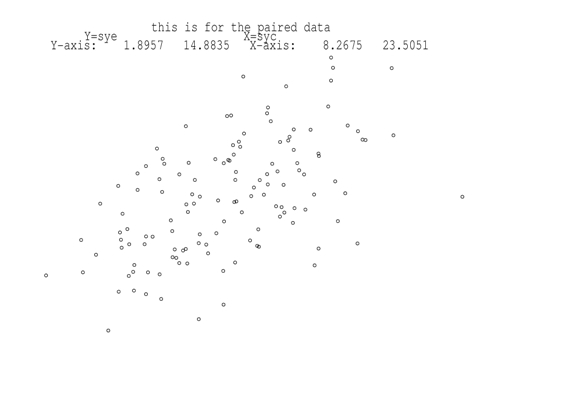

Replace tol.diff with material.diff and set the default to 0.5 in changeModelOnIC.Īdd a new vignette for the use of information criteria with the wheat experiment.įixed bugs in changeModelOnIC associated with addFixed and dropFixed and with dealing with unconverged models. Removed the material.diff argument and the both option from the which.IC argument of changeModelOnIC.Ĭhange likelihood in infoCriteria to IClikelihood to make it consistent with other functions. Various bug fixes associated with asreml-R version 3.įix bug in processing a formula that includes an at function. Increment version number for resubmission to CRAN.įix bug in changeTerms when both addFixed and dropFixed are NULL.Īdded the IClikelihood argument to chooseModel.asrtests, reparamSigDevn.asrtests, rmboundary.asrtests, testranfix.asrtests, testresidual.asrtests, and testswapran.asrtests.įix bug in printFormulae when the formula is long. However, for GLMM (with random effects) it does not represent the total variation, because it ignores the part related to the random effects.News for Package asremlPlus asremlPlus Version 4.2-18 ( In a GLM (no random effects) this deviance can be used to compare models. As this working variable changes between iterations and especially between models, the LogL values are not comparable - even to confirm convergence of aĪSReml also calculates a ‘variance heterogenity factor’, which is the Deviance/DF (the deviance is calculated for the underlying maximum likelihood model). The LogL value reported by ASReml is for the analysis of the working variable. Log likelihood is not suitable for comparing binomial models Apparently Bruce has had no problems with the situations he has encountered which is encouraging. Sometimes they will be fine but I am not able to give the rules when that is the case.

using a linear predictor ignoring the animal effect) have slightly different behaviour but ASReml only has the one option inĪs the writer of ASReml I am not prepared to say you canĬonfidently accept answers you might get from ASReml when estimating heritability on the liability scale from BINARY data. Other formulations of the GLMM model (e.g. My own studies 20 years ago suggested that there was a tendency for the estimated variance component to be biased down (it is too small). There are strategies for handling this, like making contemporary groups RANDOM at the lowest level, or collapsing classes.Įven if all fixed effects have a welled defined mean (not 0 or 1), the animal model is still fitting an effect for every individual and the only constraint on that effect being ± infinity is that it has a correlation with other effects which may have the opposite sign. However, dropping such classes from the analysis, is likely to change the overall mean, hence the overall model. It is not easy to quantify the bias in any particular case without doing a simulation study.Īrthur’s explanation for this problem is that as the mean incidence becomes more extreme, the likelihood of fixed classes having all 0’s or all 1’s increases, and then there is no genetic information available from that class. The situation for Sire (Family) models seems to be a bit better. Generalised Linear Mixed Models (GLMM) procedures in ASReml (which use the Schall method) may be seriously biased when applied to animal models (which is why they have not been described in the User Guide). It seems to be easier starting on binary data and David Collett’s book Modelling Binary Data is an excellent starting point. He will give a course at Iowa State University on AS Reml in summer 2005. Another good source is Steve Kachman’s work. There are papers that use ASReml, like Southey et al.

For example, the variance of the logit link is pi*pi/3 (i.e., approximately 3.29).Īre there any good references regarding generalized mixed models, particularly for genetic analysis? Basically you use the variance of the link function as the residual variance.
#Asreml manual manuals#
This is in the old manuals for the logistic models. Just as you would a normally distributed trait. How does one calculate heritability for binomial or poisson models? The following explanation is based on emails by Bruce Southey and Arthur Gilmour. It is not in the current user manual, but the explanations are in the beta manual, which you can get from Obtaining AS Reml.
#Asreml manual manual#
The old version of the manual used to include an explanation for fitting generalised linear models, including binomial and poisson distributions.


 0 kommentar(er)
0 kommentar(er)
